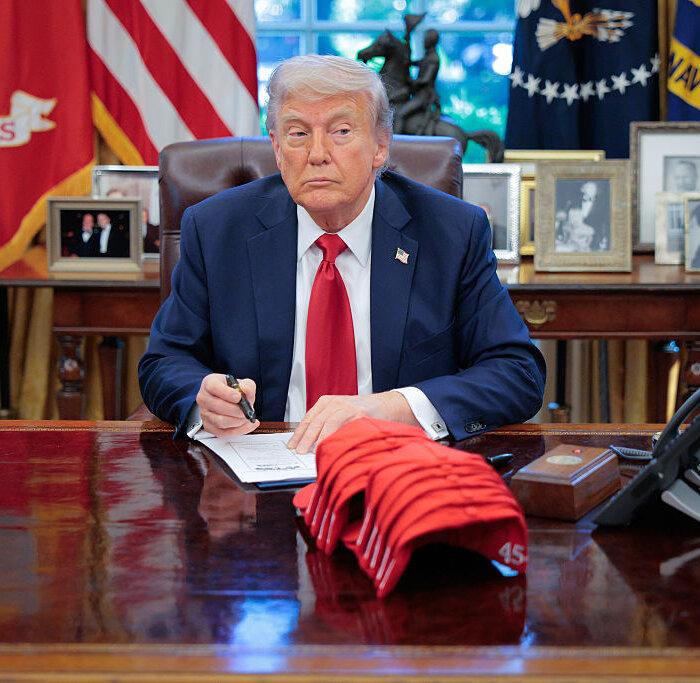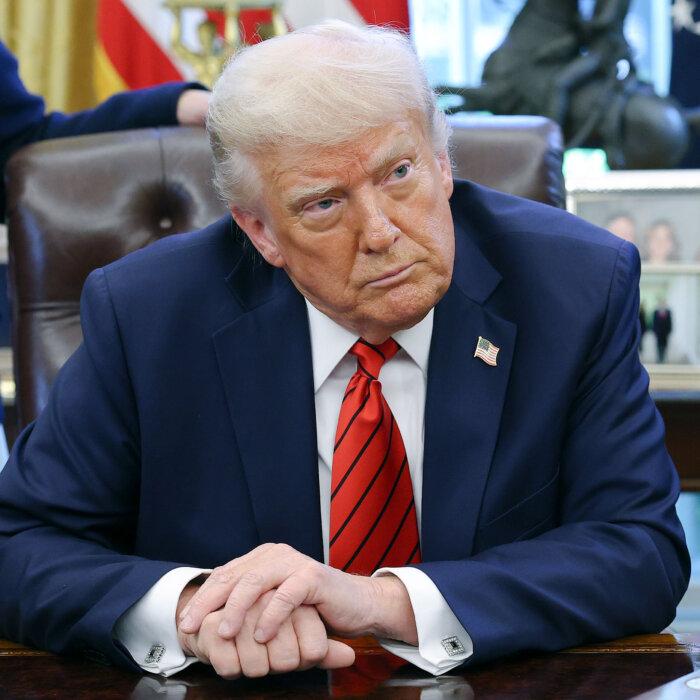President Donald Trump’s second term has been characterized by swift action and stiff opposition.
Political opponents also wasted no time resisting many of the president’s initiatives, challenging some actions in court and protesting others in the streets.
Executive Actions: 10 Per Week
During the campaign, Trump promised rapid action on his agenda, and he has delivered it. The returning president signed 141 executive orders during his first 100 days, including 26 on his first day in office.
Many orders implemented core items of his second-term agenda, including halting illegal immigration, building American manufacturing capacity, and increasing domestic energy production.
Other orders fulfilled campaign promises related to transgender ideology, reducing government regulations, lowering the cost of prescription drugs, and withdrawal from the World Health Organization.
Court Challenges: 2 Per Day
Less than 48 hours after the 2024 presidential election was called for Trump, the American Civil Liberties Union published a full-page ad in a national newspaper vowing legal action for various civil rights violations it alleged Trump would commit.
So began one of the most contentious starts to an administration in modern history.
Economic Indicators: Up, Down
Economic indicators mostly improved through March, the last month for which complete data is available. Nonfarm job creation nearly doubled since Trump took office, although the unemployment rate rose 0.2 percent.
Inflation declined by 0.5 percent, reaching 2.8 percent, its lowest level since February 2021.
Trump’s tariff strategy, launched on April 2, which he called “Liberation Day,” appeared to cause uncertainty among investors, which could affect economic indicators for April.
The president said his tariff strategy is to reverse the trade imbalance between the United States and other nations by levying reciprocal tariffs on their goods coming into this country. The tariffs will also encourage manufacturers to create products in the United States, according to Trump.
Manufacturing Build-Back: $1.75 Trillion
More than a dozen domestic and foreign manufacturers have announced large investments in their U.S. operations since Trump took office.
In at least one case, Trump’s tariff policy played a part in the decision to invest here. Honda is expected to manufacture its next-generation Civic hybrid in Indiana rather than Mexico.
Nissan and Hyundai are expected to move some manufacturing facilities to the United States as well, according to the White House.
Those investments include more than $1 trillion from tech giants Nvidia, Apple, Oracle, and others. Merck, the German pharmaceutical company, opened a $1 billion manufacturing facility in North Carolina this year.
Multinational automaker Stellantis announced a $5 billion investment in its U.S. manufacturing sites.
Illegal Border Crossings: 90 Percent Reduction in 40 Days
Trump’s early actions on border security included a national emergency declaration, invoking the Alien Enemies Act of 1798 to combat speed deportation, and directing the military to augment security at the nation’s borders.
Immigration and Customs Enforcement (ICE) began increased deportation operations targeting criminal illegal immigrants on Jan. 21. Immigration officials reported 32,800 arrests in the first three weeks of the Trump administration, about 73 percent of whom were illegal immigrants with a criminal charge or conviction.
ICE made 113,400 total immigration arrests during the last fiscal year of the Biden administration, according to the agency’s records.
Customs and Border Protection reported a nearly 90 percent drop in illegal immigrant apprehensions at the southern border between December 2024, the last full month before Trump took office, and March.
Taxpayer Savings: $1.6 Billion per Day
Trump created the Department of Government Efficiency, or DOGE, on Jan. 20. Headed by tech entrepreneur Elon Musk, DOGE took rapid action to reduce government spending with the goal of reaching $1 trillion in cost savings.
Immediate targets included tax-payer funded programs related to gender ideology and diversity, equity, and inclusion. DOGE also targeted waste, such as leases on unoccupied buildings.
Trump offered a Deferred Resignation Program, which allowed federal employees to voluntarily resign and retain salary and benefits until Sept. 30, the end of the fiscal year. About 77,000 of the more than 3 million federal employees opted into the program.
Other staff reductions have eliminated about 66,000 positions, nearly all of which were retirements or voluntary transitions, according to DOGE.
Three other recent presidents made significant staffing reductions during their first 100 days, as did Trump during his first term.
Sam Dorman contributed to this article.
Original News Source Link – Epoch Times
Running For Office? Conservative Campaign Consulting – Election Day Strategies!



